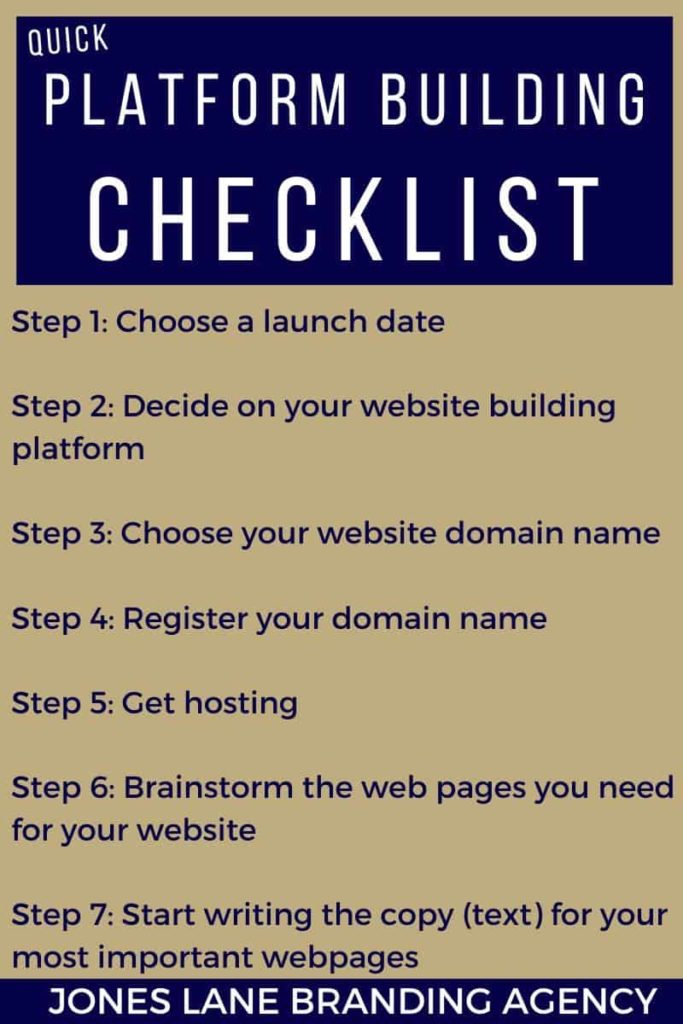Meet John. He has a brilliant new business idea. John is going to bake and sell delicious cakes. The first day, he bakes more cakes then he can count. It takes him all day, but as nightfalls, he’s proud of himself and his cakes.
Then he realizes he has just one problem…
Where is he going sell them?
People certainly aren’t going to drive to his house in the countryside. He needs a place to put the cakes where they can be on display.people can find out what he has to sell and purchase or at least have a look at his cake menu and place an order.
In digital speak, he needs a platform.
And during this pandemic, you need a digital platform now more than ever. People are restricted from meeting in person. This hinders most in-person sales.
The answer?
Build an online platform for people to purchase your offers.
Why is a platform so important?
Your platform is where you house your products and services.Think of your platform like your shop.
To be a part of the virtual economy, you need a location where people can come and find out about what you do and who you serve. And, of course, they can purchase from you on your platform.
Choosing the right platform
Here are a few things to consider when choosing a platform:
What will it be used for?
First, you need to be clear on the purpose of your platform. This will help you decide which platform is right for your business. So, how do you know which platform to choose?
Here are a few common choices:
*Have a website built for you
This may be the ideal situation if you have the funds available. Typically, when you have a website built by a professional, you’ll get a well-designed, functional platform for selling your products and services.
*Build your own website
This may be your best option if you don’t have budget to invest in a professional web site design and development.
If you go this route, you may choose to make use of a website builder, such as Wix. It allows you to build a website fairly quickly and without any technical skills. But bare in mind, you’ll be limited to the changes you can make when using builders like these. You’ll be choosing from pre-made templates.
Another option, which is the most popular nowadays, is to build your website using using the software from WordPress.org. This has become of the most popular options because WordPress is a robust platform, with plugin software that allow you to add functionality to your website fairly easily.
But even with WordPress being known as the go-to option for building your own site, bear in mind, this will take a significant investment of your time and energy.
No matter which option you choose, you’ll need a website name (domain name) and hosting.
*Create a landing page
This is similar to building a website but is much simpler. A landing page is a webpage that serves just one purpose. In the case of your products/services, your landing page could either be a sales page (where people purchase your offer) or an opt-in page (where people enter their email to download a free digital offer, which allows you to capture people’s email addresses. Later you could email subscribers with information on your paid offer).
For the landing page option, you can either build full website and just complete one page or use a pre-made template. This is one of the fastest, simplest ways to get up and running quickly.
Here are a few common landing page softwares:
*Use a social platform
This is obviously the quickest option. You can have a social media page and profile set up in minutes. But it’s not always the best solution. As mentioned in Creating a Thriving Virtual Business, when you use a social media platform, you are at the mercy of that social media platform.
Your account can be deactivated or the platform could radically change their policy and functioning, which affect your business. I’ve heard plenty of horror stories of large social media accounts that suddenly got hacked or deactivated and the account holder lost all of their followers and audience.
Maintaining your platform
It isn’t enough to create the platform and then walk away. You need create a schedule for updating and maintaining it.
If you build a website, from the outset, create a plan for how your site will be updated and maintained. This includes technical updates that need to be done and content updates.
How often will you update content?
Will you handle technical updates or will you hire someone?
How often will you update your products (images, copy, and sales promotions) on your website?
Answering these questions will help you create a plan for maintaining and updating your platform regularly.
It may seem like a lot to do, but remember thousands of people are doing it. It isn’t impossible. You simply need to start somewhere.
And to help you get a start, I’ve created a quick checklist to get you going.

Here’s a checklist for building your product platform. You can use this as a base to build from and make adjustments if you’re going to use a social media platform instead of launching a website.
Step 1: Choose a launch date
Step 2: Decide on your website building platform and/or developer
Step 3: Choose your website domain name
Here’s an excellent tool that helps you search to see if your domain name (and the matching social media profiles) are available or already taken. https://knowem.com/
Step 4: Register your domain name
You can also register your domain and hosting with the same company to make things easier
Step 5: Get hosting (a web developer may handle this if you’ve chosen one)
Step 6: Brainstorm the web pages you need for your website
Remember, web developers will not be writing content and also will not know which pages are best for your business.
Step 7: Start writing the copy (text) for your most important webpages or hire a professional copywriter to write them for you.
